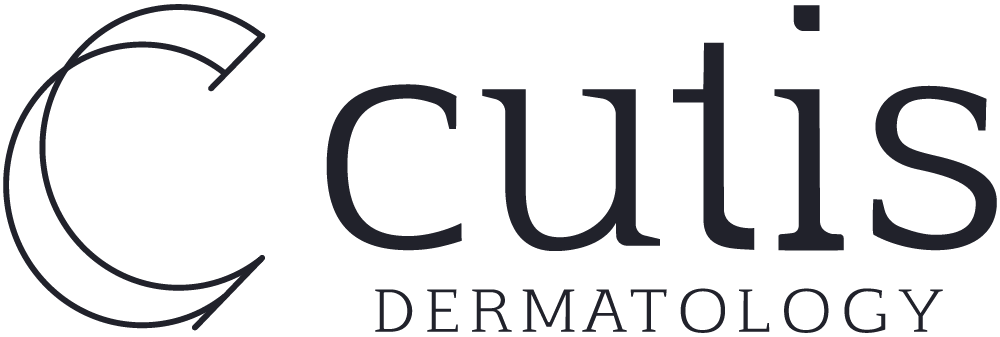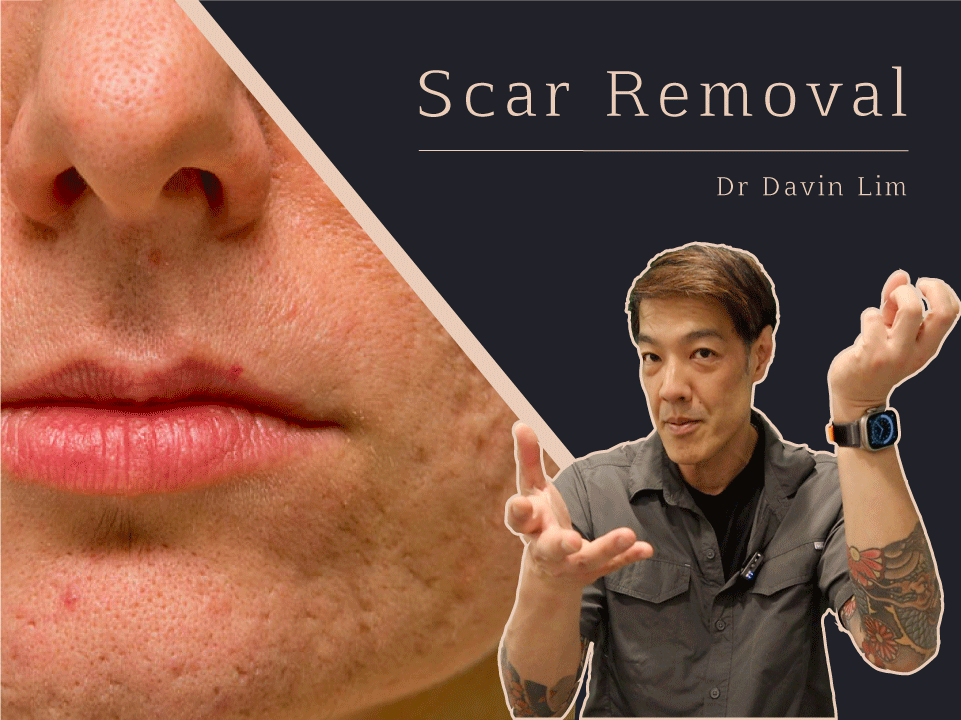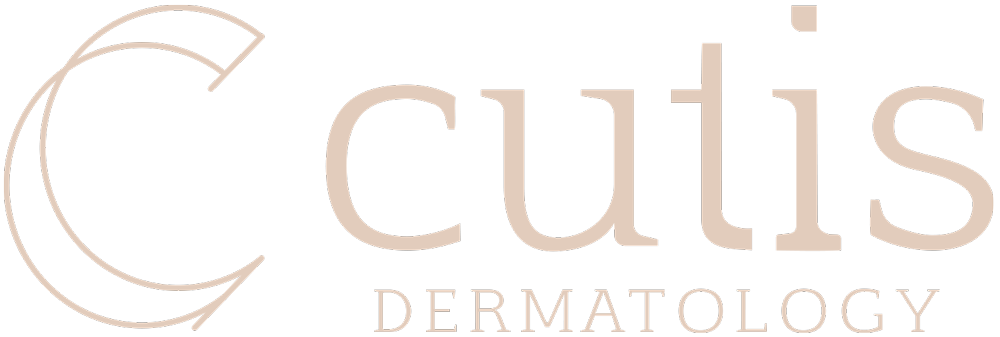CO2 laser resurfacing is an excellent treatment of superficial scars that lie in the same level. This laser can be employed in fractional mode, or as a fully ablative procedure. The settings depend on your skin type and scar depth. Using specific lasers, we can safely & effectively treat all skin types.
Key Points
- CO2 laser are the gold standard in scar revision
- Lasers are useful in treating superficial to medium depth scars
- Fractional CO2 is the most prescribed procedure for scars
- Fully ablative CO2 is useful for scars that lie in the same depth
- Recovery can be tailored according to your downtime
- Cutis has 5 different types of CO2 lasers as we tailor equipment according to the clinical requirement
CO2 laser resurfacing acne scars at a glance
Our results speak for themselves
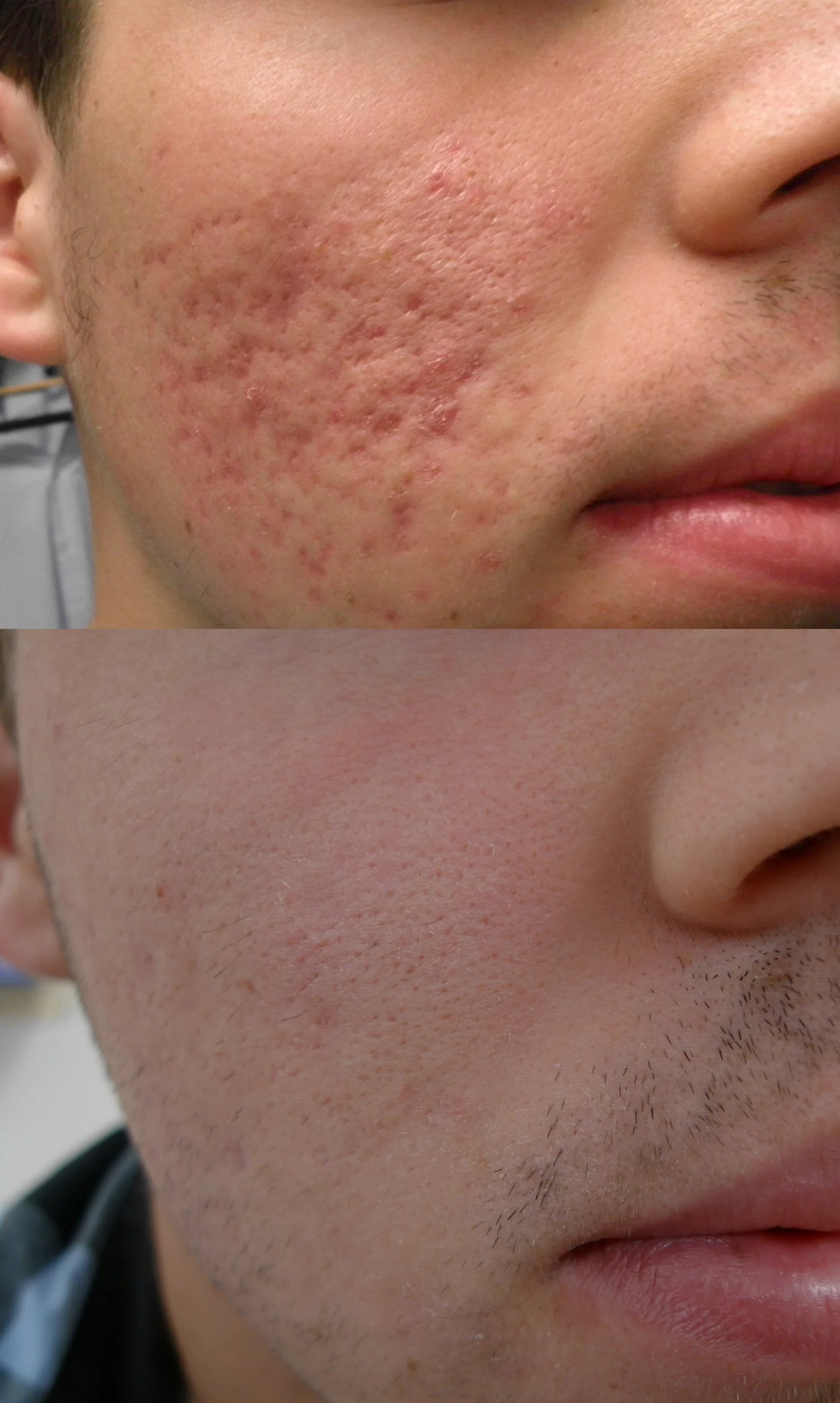
Before
After

Fractional CO2 lasers
Ask us more about this treatmant
Preferred Consultation
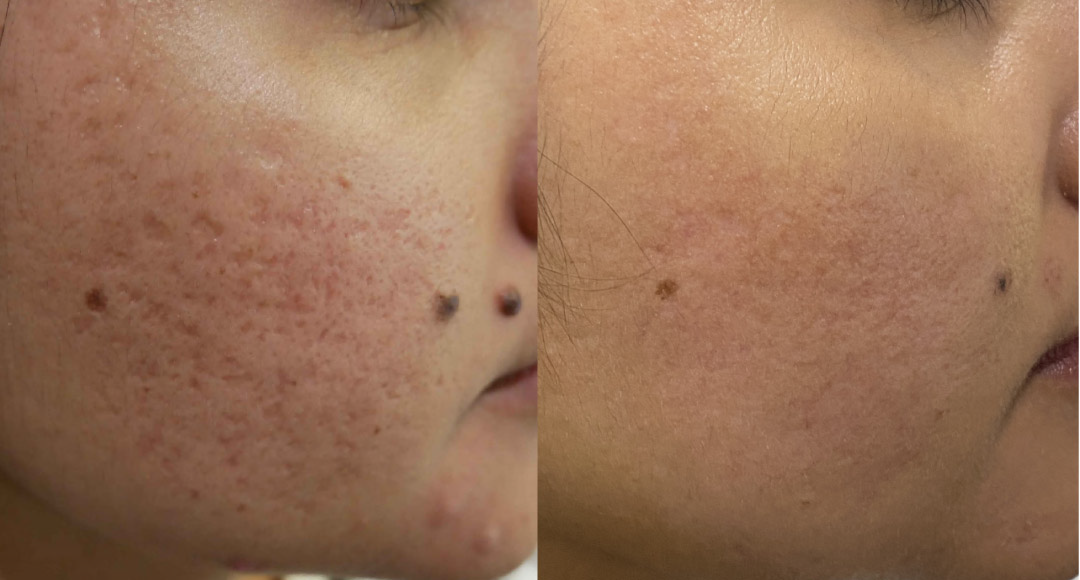
Before
After
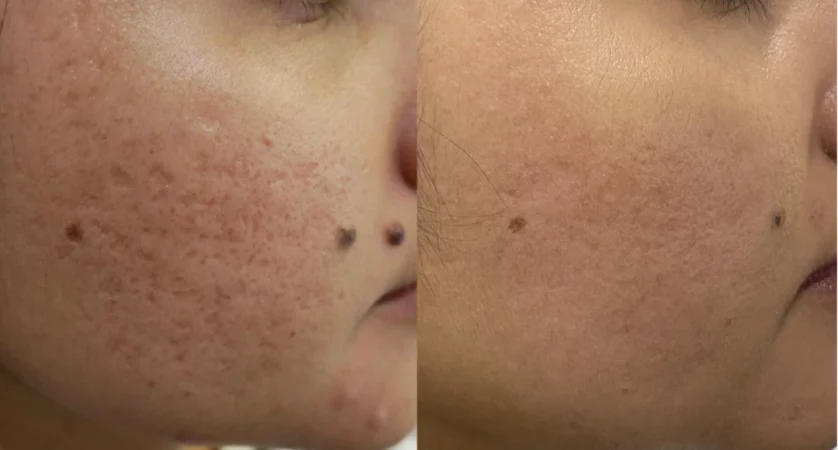
TCA Paint, CO2 laser resurfacing. Skin type 4+.
Ask us more about this treatmant
Preferred Consultation
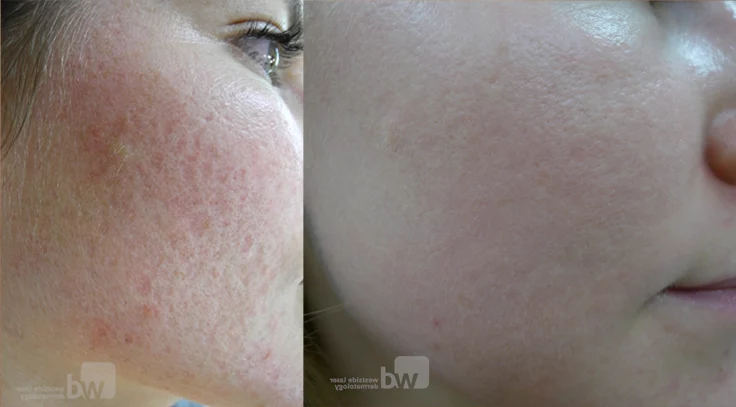
Before
After

CO2 & erbium laser resurfacing, one session
Ask us more about this treatmant
Preferred Consultation
FAQs
What scars do best with CO2 lasers?
Laser resurfacing is best for superficial to medium depth scars. These include boxcar scars, shallow pick and ice pick scars, superficial rolling scars as well as hypertrophic scars.
Lasers will also improve skin quality, shrink pores & reduce pigmentation. They can improve the light reflex & radiance of your skin.
What is a CO2 laser and how does it work?
CO2 lasers are the gold standard in scar revision. They have more evidence behind them in comparison to non-ablative lasers, microneedling & radiofrequency treatments.
CO2 can be delivered with a full beam, covering all the skin’s surface, or fractional laser resurfacing, covering between 5 to 60% of the surface area. Fractional resurfacing provides great outcomes with minimal downtime, risks & costs.
Laser work by stimulation of collagen as well as breakdown of scar tissue. Controlled heating of lasers stimulates a cascade of pro-inflammatory mediators through HSP or heat shock protein. This results in generation of new collagen production in the deeper layers of skin. “Cold” devices like microneedling are useful for delivering agents into the skin, but do not generate HSP, hence are not as effective for scar revision.
How do I know if a CO2 laser is the correct treatment for me?
Book a consultation with our dermatologists, they will assess your scars & guide you through the revision process.
Cutis also runs a nurse-led scar assessment & revision clinic. Our senior nurses can assess your skin & provide a comprehensive no obligation treatment plan. The nurse led clinic provides affordable treatments for all patients.
Can all skin types be treated with CO2 lasers?
Yes, but settings matter. CO2 lasers are best for fair to medium skin tones. If you have darker skin colour, we use special lasers to reduce the chances of post treatment darkness.
Our clinicians will match your skin tone to specific lasers, ensuring that outcomes are optimal, whilst minimising side effects.
What is the difference between Fraxel and CO2 lasers?
Fraxel is a name brand that has many different lasers including Fraxel Re:Pair, a CO2 laser. We did use this laser for 3 years, but the results were underwhelming, so we gave back the laser. The CO2 lasers we now use are much better, with less downtime, costs, less side effects, & far better results. The CO2 lasers we now use are-
-
- eCO2 by Lutronic. Probably one of the best lasers out there
- Ultrapulse laser by Lumenis. The most powerful laser in the World (but power is not everything)
- Mixto laser. Great laser, made in the USA
- CO2RE by Candela. A good all-around laser
- Sciton Modulated erbium / CO2: for ablative work
Cutis also does R&D for many brands, hence if a laser is good, we keep it.
How many treatments will I need?
One to four sessions. It depends on factors such as-
- Skin type. Darker skin will require more sessions.
- Scar type. Deeper scars require more treatments.
- Downtime. Shorter recovery means more sessions.
- Expectations. Self-explanatory.
Our aim is to improve your scarring in the minimum number of sessions, respecting your skin colour & downtime. Your dermatologist will give you an accurate estimation prior to treatments.
Are treatments painful?
Pain relief is tiered according to the depth & coverage of the laser. We got you covered.
- Superficial laser resurfacing: numbing only
- Medium laser resurfacing: numbing, blocks & gas
- Deep laser resurfacing: conscious sedation, numbing, & blocks
Post procedure and throughout the recovery process, there is no pain.
Products

Rationale #1 Serum
$206.00

Rationale #3 Tinted Serum SPF50+
$204.00
Laser resurfacing is best for superficial to medium depth scars. These include boxcar scars, shallow pick and ice pick scars, superficial rolling scars as well as hypertrophic scars.
What is recovery like?
You look worse than you feel. CO2 lasers give epic results, but also longer recovery times. As a guide;
- Superficial or level 1-2 resurfacing: 2-4 day recovery. Red for 4-6 days.
- Medium or level 2-4 resurfacing: 3-5 day recovery. Red for one to two weeks.
- Deep or level 4-5 resurfacing: 6-8 day recovery. Red for 1-3 months.
We will give you an accurate time frame of the recovery process. For deeper resurfacing, recovery can be sped up with LED, vascular lasers & pico lasers.
When will I see results?
Results are seen as early as one week after resurfacing, with maximal gains at 4-6 months. It takes this long for collagen remodelling.
With a series of treatments, results will compound over a period of 6-12 months. Outcomes are predictable providing you have your acne under control. Active acne leads to inflammation. Inflammation slows down collagen production.
How does CO2 compare to microneedling?
No comparison. CO2 provides much better results compared to microneedling in the context of atrophic scars. It is primarily due to the heating achieved with lasers over microneedling. We apply lasers in a special way to reduce side effects & downtime.
We do however use microneedling to treat some forms of scarring, including tethered scars & hypertrophic scars. Microneedling is useful to deliver topicals into the deeper layers of skin.
How much do treatments cost?
Cost depends on the complexity of laser resurfacing, your Medicare benefits / insurance cover, as well as the settings of the laser. As a guide-
- Light resurfacing by our nurses: $590-$890 per session.
- Medium resurfacing: $650-$990
- Deep resurfacing by dermatologist: $1890 upwards
Medicare covers treatments by a dermatologist. The amount you get back ranges from $200 to $1500, depending on the procedure. Your specialist will discuss the projected fees prior to any procedure.
What other treatments do we offer for acne scarring?
Our dermatologists and nurses perform other scar revision techniques, apart from CO2 lasers. We approach scar revision by matching a treatment to the scar type. These include;
- Deep focal peels: TCA or Phenolic acid. This is known as CROSS or paint.
- Laser resurfacing (full ablation): Erbium
- Fractional lasers: MixTo, eCO2, CORE 2, Ultrapulse Deep Fx, Scar Fx, Fraxel, C+B
- Subcision: Nokor, blunt cannula, hypodermic, Taylor, dove-tails
- Surgical: Punch elevation, excision, grafting, dermal grafting, fat transfer, micropigment transfer
Why is sunscreen so important after CO2 laser resurfacing?
UV prolongs the recovery from lasers. Sun exposure can make redness worse as well as pigmentation. It is important to choose a cosmetically elegant stand-alone sunscreen. La Roche Posay or Invisible Zinc are good brands. Use as follows;
AM: 2-3 ml application face, neck
Noon: 2-3 mls Re-application
What should you consider before undertaking laser treatments?
Undergoing pigment treatment is an investment for patients. Here are some helpful points that may help you along your journey.
- Always control your acne. You will go infinitely faster & better with any scar revision treatment. This means absolute (or almost absolute control), it does not mean ‘much better than before.’ If in doubt, see a dermatologist.
- Sun protection is paramount. It does not mean you can’t go out in the sun, it means sun protection is important. SPF 50+ twice a day regardless of exposure. If a 50 ml bottle lasts longer than 3 weeks, you are not using enough sunscreen.
- Darker skin types: you may require more sessions compared to lighter skin. In some cases, we will expectedly darken your skin, but will come up with solutions to lighten it back to normal.
- Settings of laser matter. Lasers are just tools to get the job done. Laser parameters are crucial for best outcomes. Additionally, using the correct CO2 laser brand is vital for good outcomes. Therefore we run 4-5 CO2 lasers at Cutis.
